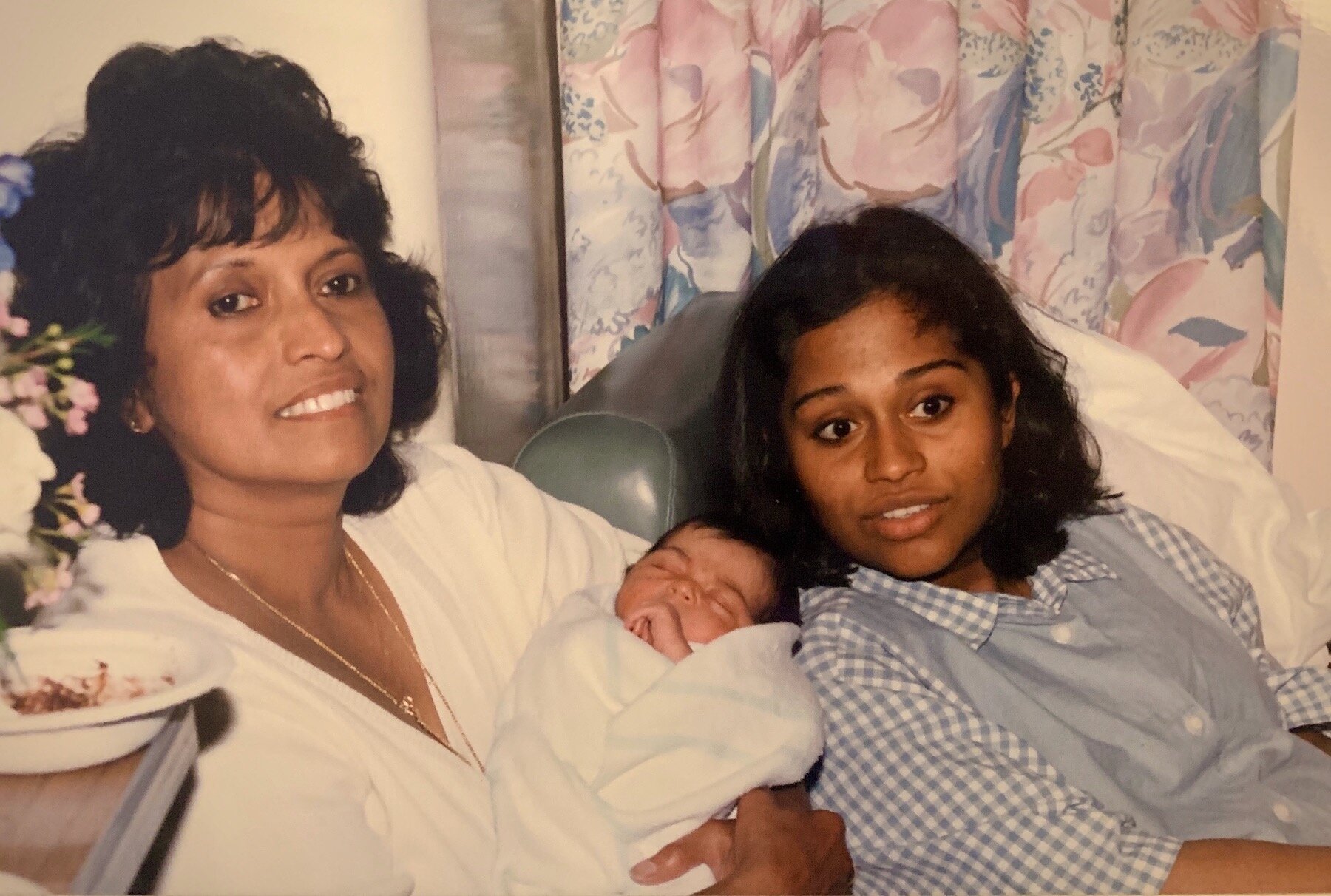JESSICA DE SOUSA
People often try to guess my background - top three are usually Brazilian, Spanish or Lebanese…When I tell them I’m half Sri Lankan and half Portuguese, they respond with ‘oh yeah, I can see that!’.
My maternal grandparents are originally from Colombo, Sri Lanka - but with them having Dutch and Portuguese ancestry, they were both part of a small ethnic group known as ‘Burghers’. When my grandparents were in school, English was mandatory and they learnt little of the native Sinhalese language. When the Sinhala Only Act was introduced in 1956, Sinhalese became the preferred language - and conflict between the Sinhalese and Tamils intensified in the years that followed, culminating in what would become a 30-year civil war.
Sri Lanka became a republic in the early 1970s, and my grandparents decided to move to Sydney’s Inner West - with the typical migrant motivation of giving their five kids a better life. My mum, the youngest, was three years old at the time. She doesn’t remember anything about Sri Lanka, and actually didn’t return until we went there on a family holiday when I was eight, and she was 34!
My mum describes her childhood in Australia as ‘pretty normal’. She and her siblings grew up in Earlwood, which was a mostly Anglo suburb back then - but there was enough of a multicultural presence in the area that they didn’t stand out too much. My grandparents were extremely social - always entertaining new friends from work, or people they met in the neighbourhood. The house was always full of people and my nan was an amazing cook, so there was never a shortage of curries, hoppers and sambols which their Anglo friends were always so intrigued by. Like the friends of my grandparents, my mum’s friends also loved all of the delicious food on offer at their house.
For the most part, society has been welcoming of my family in Australia. But some of the challenges we’ve faced are common across generations – like when girls with a darker complexion have sometimes been brushed over when it comes to dating, or the boys sometimes being called ‘black c***s’ on the footy field, or my cousin being put in an ESL class in kindergarten just because he was the most tanned kid in his grade…
Luckily, my family are light-hearted and turn almost everything into a joke. I think this is probably linked to the fact that we are so tight-knit, as well as our determination and ability to overcome challenges and adapt to almost any environment we find ourselves in.
Most of my family’s ‘culture fix’ is related to food, and the social club my grandparents started with other Sri Lankan migrants they met along the way. I remember snippets from various events and dances we were all invited to, and which my nan catered for. There were also the big Christmas picnics we had when I was a kid, with amazing Sri Lankan food (and also where one of my uncles was always the token Santa because he was literally the only white guy there)!
“PEOPLE OFTEN TRY TO GUESS MY BACKGROUND - TOP THREE ARE USUALLY BRAZILIAN, SPANISH OR LEBANESE…”
Like my mum, I grew up in quite a multicultural community - spending most of my childhood and teenage years in South West Sydney. Interestingly, while there were kids from many different backgrounds, I was actually only one of a few ‘halfies’ in my grade in both primary and high school - as in my area in the early-1990s, it was unusual for people to marry outside of their culture.
This was complicated by the fact that most of the kids didn’t know where Sri Lanka or Portugal were - the usual responses being ‘so you’re Indian?’ or ‘where’s that?’.
Filling out forms was always confusing - I never knew which box to tick when asked what ethnicity I identified as. Was I Asian or European? Being able to tick both boxes wasn’t really an option.
The majority of my friends in my primary school were Italian, and then Lebanese when I was in high school - so I’ve always been surrounded by delicious food, strong communities and many different languages. Since we didn’t speak a language other than English at home, and I couldn’t learn from my extended family - I attended an Italian language class for three years. I’ve also picked up enough Arabic words and phrases to get me through a wedding!
If you’re ever lucky enough come to a Christmas at my aunty’s place (which isn’t hard - just meet one of us and you’re bound to score an invite), you’ll find a pretty random assortment of food: a ham next to a crab curry, brie cheese next to a pol sambol, pavlova next to a breudher (a Sri Lankan Dutch Burgher cake we always make at Christmas). My family and my culture are a bit of everything (and hugely fixated on food), just like I am. While we might not have all the pieces, we’ve created our own.
WHAT WE EAT IS MEANINGFUL
Kiribath (milk rice) is a breakfast dish which my family reserves for special occasions - it’s also served at the start of the month or new year, and is often the first solid food fed to infants in Sri Lanka. They say - if you let the coconut milk boil over the pot while cooking, good luck will come your way! Kiribath is best eaten with a spicy sambol.
DISH OF OUR HERITAGE
KIRIBATH AND KATTA SAMBOL



